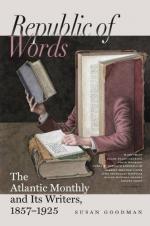Some years since, a certain bank placed in my hands two promissory notes for large amounts, purporting to be signed by a Mr. Temple and indorsed by a Mr. Conway, and which both maker and indorser pronounced forgeries. Both notes were written on common white paper, and were purchased by the bank of a certain broker at a time when it was difficult to make loans by discount in the usual manner. Before the maturity of the notes, the broker, who was a Jew, had left for parts unknown. He left behind him no liabilities, unless he might be holden for the payment of the notes above specified, and several others signed and indorsed in the same manner in the hands of other parties. Several attempts had been made by professional experts to trace resemblances between the forgeries and the genuine handwriting of said Temple and Conway, as well as the broker, but all had reluctantly come to the conclusion that the signatures were as dissimilar as well could be. The cashier was exceedingly embarrassed by the fact that Mr. Conway was one of the directors of the bank, and he was presumed to have been so familiar with his signature as to be incapable of being deceived.
After a most diligent investigation and the expenditure of much time and money, and after skilful experts and detectives had given up in despair of ascertaining either the whereabouts of the Jew or anything further till he could be produced, the holders of this paper had settled down quietly in the belief that the broker was the guilty party and that all further effort was useless. At this point of time, when all excitement had subsided, these notes came into my possession. I immediately telegraphed to Mr. Sidney, and it was with great joy that I received the reply that he was on his way. At three o’clock in the morning I met him at the railroad station. He complimented me by saying there was not another man living for whom he would have left the city of —— on a similar message. I thanked him, and we walked to the office. Before arriving there, I had merely informed him that I desired his services in the investigation of a forgery that baffled our art. He demanded all the papers. I produced the forged notes, several genuine checks and letters of Mr. Temple and Mr. Conway, and several specimens of the handwriting of the broker.
Long as I live I can never forget the almost supernatural glow that came over his features. I could almost see the halo. No language can describe such a marked and rapid change of countenance. His whole soul seemed wrapt in a delightful vision. I cannot say how long this continued, as I was lost in admiration, as he was in contemplation. I spoke, but he seemed not to hear. At last his muscles relaxed, and he began to breathe as if greatly fatigued. He wiped the perspiration from his brow, and said, as if to himself,—
“Sure!”
I asked what was sure. A few minutes elapsed, and he said more loudly,—




